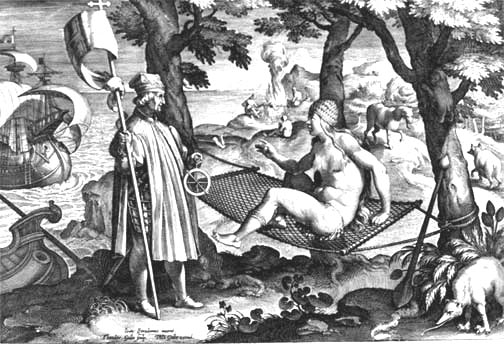Magellan Expedition
Completes Circle of Globe- 1522

Ferdinand Magellan, a seasoned sailor who had spent seven years navigating for the Portuguese in the Far East, believed that sailing westward would be a more efficient route than going around Africa. Although King Manuel of Portugal was not willing to support such an ambitious voyage, King Charles V of Spain provided Magellan with a fleet of five ships. Magellan set sail in August 1519 from Seville, Spain.
The fleet spent the winter at Port St. Julian, where the captains of four ships staged a mutiny against Magellan. Magellan successfully quashed the rebellion and executed many of the mutineers. The fleet, now reduced to three ships, continued south along the coast of South America. On October 21, 1520, Magellan discovered the strait that would later bear his name—the Strait of Magellan. It took the fleet 38 days to navigate through the 338-mile-long strait. On November 28, 1520, they emerged into the Pacific Ocean.
The journey across the Pacific Ocean took fourteen weeks. The fleet finally reached Guam, where they resupplied with food and other essentials. They then proceeded to the Philippines, where Magellan became embroiled in a local civil war. He was killed in battle at Mactan on April 27, 1521.
After Magellan's death, the expedition continued under the leadership of Captain Juan Sebastián del Cano. The remaining ship, the Victoria, set off on a westward course on December 21. Over a year later, on September 9, 1522, only 18 out of the original 239 men who had embarked on the journey returned to Seville. This expedition became the first known successful circumnavigation of the Earth, although Magellan himself did not live to complete it.
First Hand Account of the Voyage
 >
>